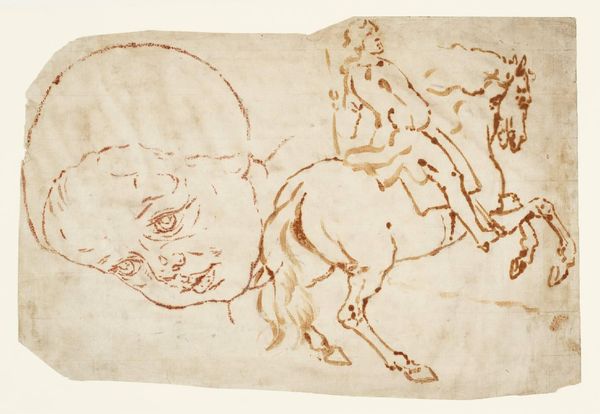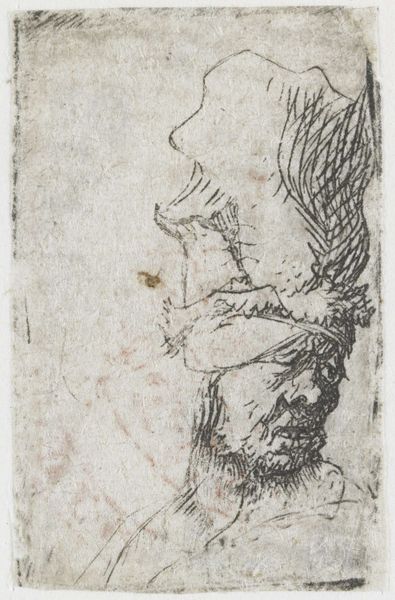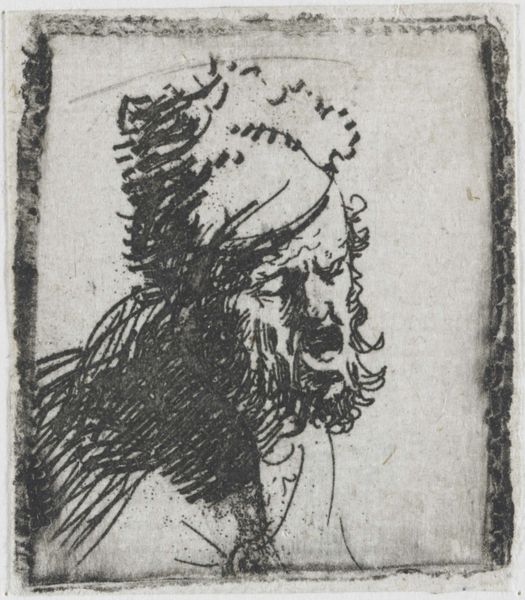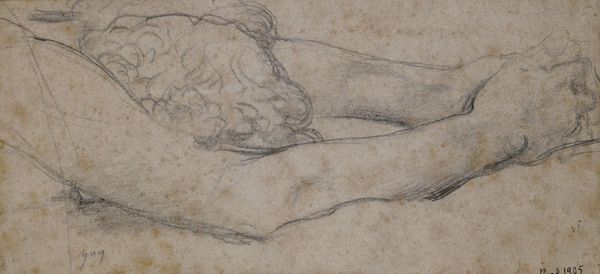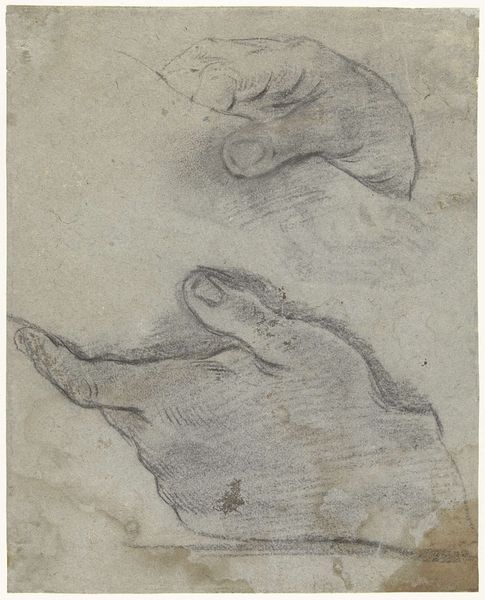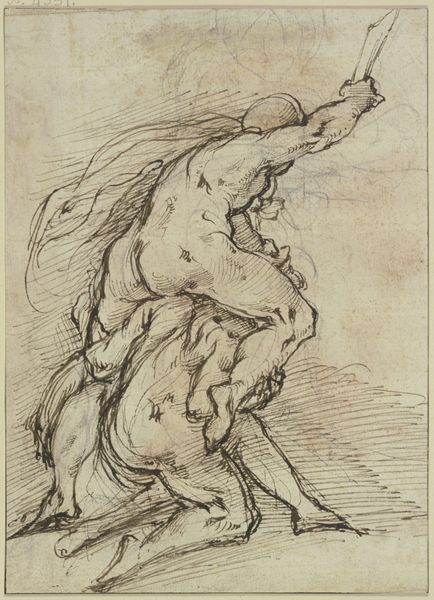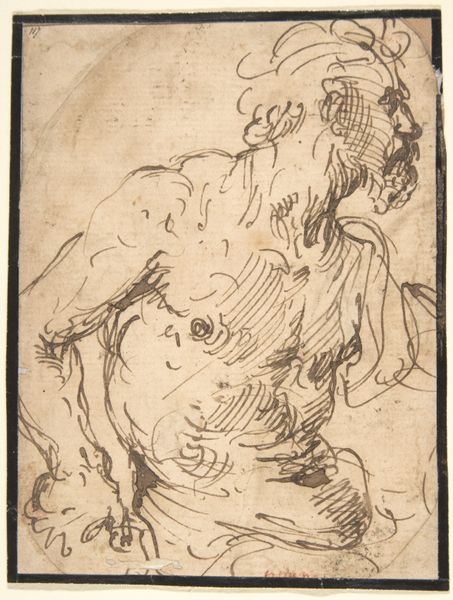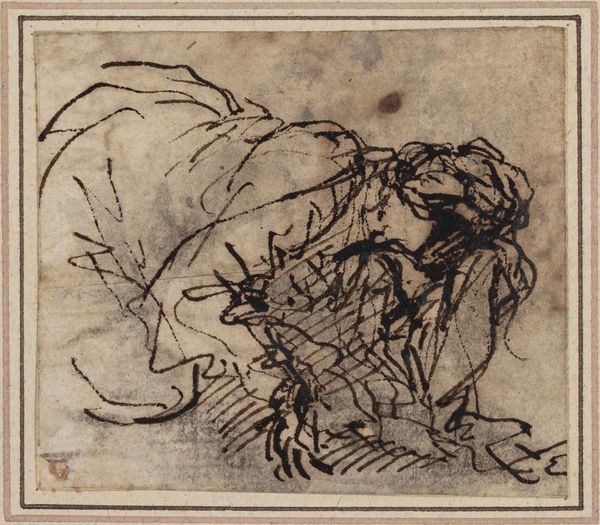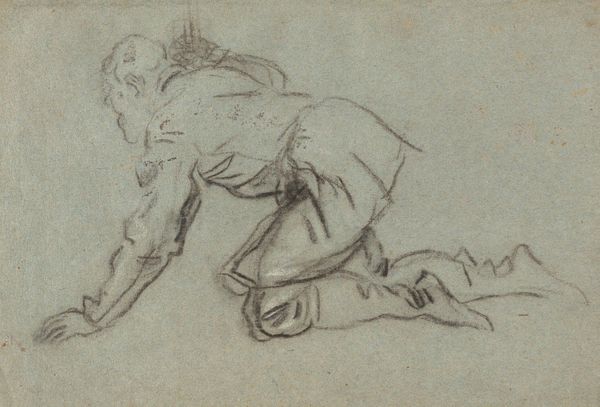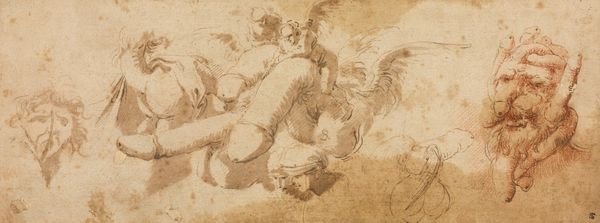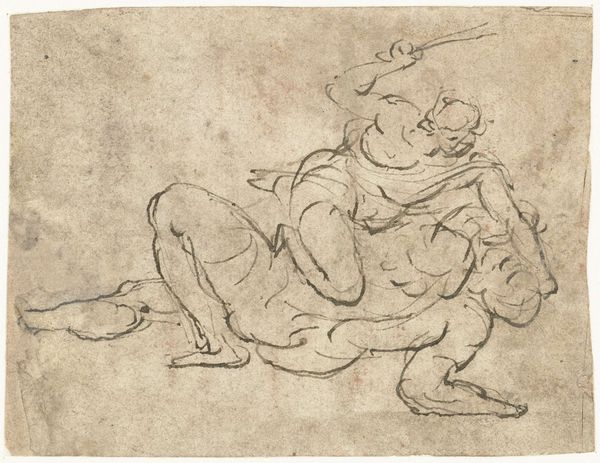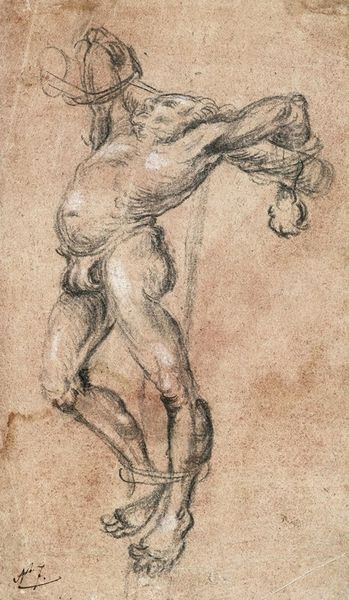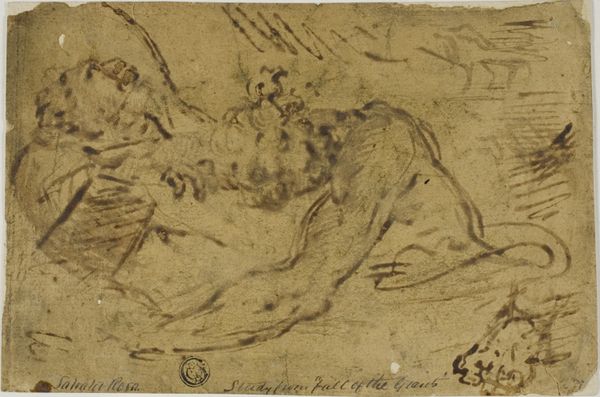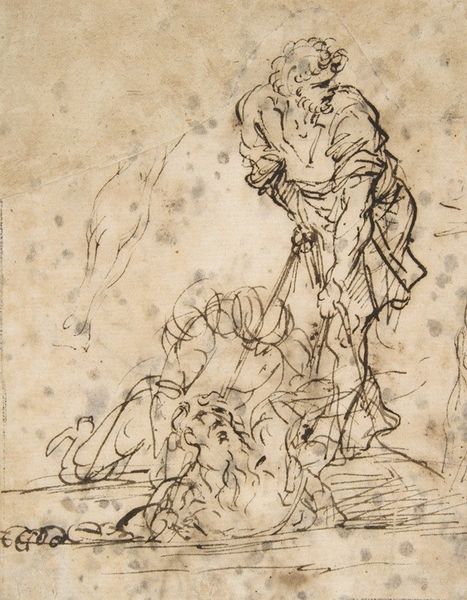
drawing, charcoal
#
portrait
#
drawing
#
figuration
#
romanticism
#
charcoal
#
history-painting
Copyright: Public Domain: Artvee
Editor: So, here we have Benjamin West’s “Head of a Screaming Man,” a charcoal drawing from 1792. It’s intensely dramatic, the raw emotion is almost overwhelming. What’s your take on this piece? Curator: What strikes me is how West engages with the visual language of revolution and societal upheaval. Think about the late 18th century: revolutions in America and France…This image isn’t just about personal anguish; it reflects a collective cry against oppression and injustice. Editor: I see what you mean! I was just thinking about a single man's torment. Are you saying that it could be a portrait of the era’s unrest? Curator: Exactly! Consider how West uses charcoal. It's a medium that allows for stark contrasts, echoing the binary oppositions prevalent in revolutionary rhetoric – oppressor versus oppressed, old order versus new. What does the exposed and contorted facial expression say to you in light of those binaries? Editor: That it depicts a man experiencing the horrors of oppression. Is the scale a factor in the political reading, then? Curator: Absolutely. While a study, its intensity suggests a figure meant to resonate on a larger stage. It connects to history painting but also taps into broader discussions about the aesthetics of suffering and the role of the individual in times of conflict. It challenges us to think about who gets to voice that pain, and whose voices are silenced. Editor: So much more than just a screaming man, then. It is a mirror to the turmoil and social struggle during this period. Thank you! Curator: My pleasure. Hopefully it encourages a dialogue to contextualize art with socio-political history.
Comments
No comments
Be the first to comment and join the conversation on the ultimate creative platform.
